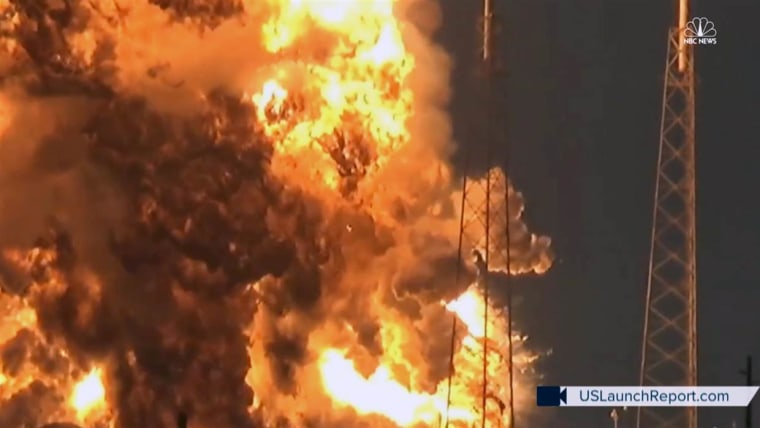Barely three months after one of its rockets blew up on the launchpad — destroying a $200 million Facebook satellite with it — SpaceX said Monday that it plans to try again this weekend.
The new launch date was included in a report SpaceX released on the explosion of its Falcon 9 rocket at Cape Canaveral, Florida, on Sept. 1.
The "anomaly" — SpaceX's word — was caused when supercold helium led carbon fibers and aluminum to cool at different rates on the second of the rocket's two stages, the company said. That opened gaps between two layers of overwrap, where liquid oxygen escaped and got trapped, it said.
That, in turn, caused one of the protective layers to "buckle," or fail. Static ignited the trapped oxygen, setting off a chain of catastrophic explosions, SpaceX said.
Related: Blasting Into 2017: What's in the Stars For Space Travel
The Falcon rocket was to have launched an AMOS-6 communications satellite for a Facebook-Eutelsat joint venture to extend Internet access to underserved parts of the world. Facebook founder Mark Zuckerberg said he was "deeply disappointed" by the loss but promised that "we will keep working until everyone has the opportunities this satellite would have provided."
SpaceX, a private space venture run by billionaire inventor Elon Musk, said Monday that its engineers have managed to rejigger the configuration of the rocket's helium containers, moderating the temperature of the helium and presumably eliminating buckling in the overwrap layer.
If it's successful, the next launch, tentatively schedule for Sunday at Vandenberg Air Force Base, California, will put 10 satellites into orbit to upgrade and replace some of the units in the Iridium Communications satellite constellation, a system of 66 satellites that provide voice and data coverage around the world.

